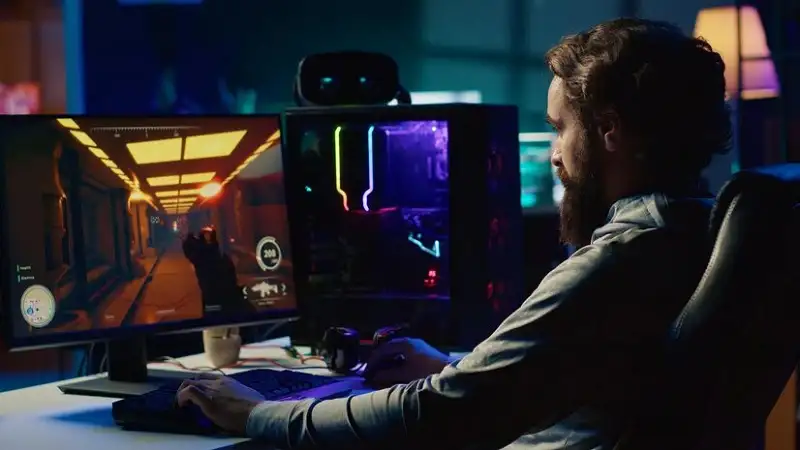PBLinuxGaming: The Rising World of Linux Gaming
In the world of gaming, where Windows and console platforms dominate, an emerging player is quietly making waves: Linux. For years, Linux was dismissed as a platform for gaming, known mainly for its developer-friendly nature and its wide use in servers. However, recent developments in the gaming community, coupled with efforts from large companies like Valve, have pushed Linux into the gaming spotlight. The rise of PBLinuxGaming (short for “Pro-Base Linux Gaming”) is a testament to this shift, showing that gaming on Linux is not just possible but thriving.
This article dives into what PBLinuxGaming is, why it’s gaining attention, and how you can get started on your own Linux gaming journey.
Table of Contents
ToggleThe History of Linux in Gaming
To understand the importance of PBLinuxGaming, it’s helpful to look back at the history of Linux and its relationship with gaming. For decades, Windows held a monopoly on PC gaming, primarily due to its compatibility with DirectX, a set of APIs that enable game developers to create rich, high-performance games. Linux, by contrast, used OpenGL, which, while powerful, didn’t see the same widespread use for gaming.
In the early 2000s, Linux was largely considered a platform for tech enthusiasts, developers, and those who wanted more control over their operating system. For gaming, it was simply not feasible—most developers didn’t see the need to port their games to Linux, and as a result, Linux gamers had limited options. The compatibility layers like WINE (Wine Is Not an Emulator) helped bridge the gap by allowing some Windows games to run on Linux, but the experience was far from smooth.
Valve’s Entry: A Game Changer
The real turning point for Linux gaming came in 2013, when Valve, the company behind Steam, announced its plans to support Linux. Valve’s decision was driven by its desire to escape the constraints of Windows, and it introduced SteamOS, a Linux-based operating system designed for gaming. Alongside SteamOS, Valve also began working on Proton, an open-source compatibility layer that allows many Windows games to run on Linux.
With Proton, gamers could suddenly access thousands of games in the Steam library that had never been available on Linux before. This marked a watershed moment for Linux gaming and laid the foundation for the rise of the PBLinuxGaming community.
What is PBLinuxGaming?
PBLinuxGaming refers to the community and movement of gamers who advocate for Linux as a primary platform for gaming. It encompasses several key ideas:
- Promotion of Linux as a Gaming Platform: PBLinuxGaming advocates believe that Linux is a viable, even preferable, platform for gaming. They encourage others to make the switch, showing that modern Linux distributions can handle gaming just as well as, or even better than, Windows.
- Open-Source Advocacy: A major aspect of the PBLinuxGaming movement is its strong support for open-source software. Many in the community believe that open-source tools and platforms provide greater freedom, flexibility, and privacy than proprietary systems.
- Optimization and Customization: Linux allows users to customize their gaming experience in ways that are not possible on Windows or consoles. From tweaking the kernel to optimizing system performance, PBLinuxGaming enthusiasts take pride in the level of control they have over their gaming rigs.
- Emphasis on Compatibility: One of the most important developments for PBLinuxGaming has been the continued improvement of compatibility layers like Proton, Lutris, and DXVK (DirectX to Vulkan translation). These tools allow Linux gamers to play titles that are traditionally available only on Windows.
Why Choose Linux for Gaming?
If you’re considering switching to Linux for gaming, there are several reasons why it could be worth your time:
1. Open-Source Benefits
One of the key selling points of Linux is that it is open-source. This means you have complete control over your system, and you’re not bound by the restrictions of proprietary operating systems like Windows or macOS. For gamers who value privacy and freedom, Linux is the obvious choice. Additionally, the open-source nature of Linux allows for continuous improvements and customizations, which can enhance gaming performance.
2. Improved Performance
Linux is known for its lightweight nature compared to Windows. It typically uses fewer system resources, meaning more of your CPU and memory are available for gaming. Many users report improved performance when running the same games on Linux compared to Windows. With the right tweaks, Linux can offer a smooth, high-frame-rate gaming experience.
3. Stable and Secure
Linux is often praised for its stability and security. Unlike Windows, where users frequently encounter system crashes, malware, and security vulnerabilities, Linux provides a more robust environment. This is especially important for competitive gamers, where system stability can make the difference between victory and defeat.
4. Proton and WINE Compatibility
Thanks to Proton and WINE, many Windows-exclusive games can now run on Linux. While these tools are not perfect, they have vastly improved in recent years, with many popular titles like The Witcher 3, Doom Eternal, and Cyberpunk 2077 running smoothly on Linux systems.
5. A Growing Game Library
With Valve’s backing and the efforts of the open-source community, more and more developers are considering Linux compatibility. Steam’s library now features thousands of Linux-compatible titles, and major game engines like Unity and Unreal Engine offer native Linux support. As a result, the library of games available to Linux users continues to grow.
Getting Started with PBLinuxGaming
If you’re ready to dive into PBLinuxGaming, here are some steps to get started:
1. Choose the Right Distribution
There are hundreds of Linux distributions (or “distros”) available, but not all are ideal for gaming. Here are a few that stand out:
- Pop!_OS: Developed by System76, Pop!_OS is often recommended for gamers due to its ease of use, gaming optimizations, and support for both NVIDIA and AMD GPUs.
- Ubuntu: One of the most popular Linux distros, Ubuntu is beginner-friendly and has strong community support, making it a great choice for gamers new to Linux.
- Manjaro: A rolling release distro based on Arch Linux, Manjaro offers cutting-edge software and great support for gaming.
2. Install Steam and Enable Proton
Once you’ve installed your Linux distro, your next step is to install Steam. Most major distributions have Steam available in their package manager, making installation a breeze. After installing Steam, you can enable Proton by navigating to Steam’s settings and checking the “Enable Steam Play for all other titles” box.
3. Install Lutris for Non-Steam Games
While Steam is fantastic for Linux gaming, it doesn’t cover every title. Lutris is a game manager that supports a wide range of games from various platforms, including Windows, retro consoles, and even Blizzard’s Battle.net. With Lutris, you can install and manage non-Steam games with ease.
4. Optimize Your System
To get the best gaming experience on Linux, it’s worth optimizing your system. This can involve updating your GPU drivers, tweaking system settings, or even adjusting the Linux kernel. Many distros, like Pop!_OS, come with gaming-specific optimizations right out of the box, but there’s always more you can do.
5. Join the Community
PBLinuxGaming is not just about playing games—it’s about joining a vibrant, passionate community. Platforms like Reddit, Discord, and the Linux Gaming forums are great places to connect with other Linux gamers, share tips, and troubleshoot any issues you encounter.
The Future of PBLinuxGaming
The future of PBLinuxGaming looks bright. With more developers embracing Linux as a viable gaming platform, we can expect the game library to continue expanding. Tools like Proton, Lutris, and DXVK will likely see further improvements, making Linux an even more attractive option for gamers. The increasing popularity of cloud gaming and streaming services like NVIDIA’s GeForce NOW also means that hardware limitations on Linux will become less of an issue, opening up the platform to an even broader audience.
Valve’s Steam Deck, a portable gaming device running Linux-based SteamOS, is another major development in the world of Linux gaming. Its success could further push developers to ensure their games are compatible with Linux, boosting the platform’s reputation in the gaming community.
Conclusion
PBLinuxGaming represents a shift in the gaming landscape. Once dismissed as a niche, Linux has become a powerful platform for gaming, with an active community of passionate users, developers, and advocates. The combination of open-source freedom, improved performance, and the growing game library makes it an exciting time for Linux gamers.
Whether you’re a long-time Linux user or new to the platform, there’s never been a better time to explore the world of PBLinuxGaming. With the right tools, the right distro, and the right community, you can experience gaming on Linux in a whole new way. So, why not take the plunge and join the PBLinuxGaming revolution?






